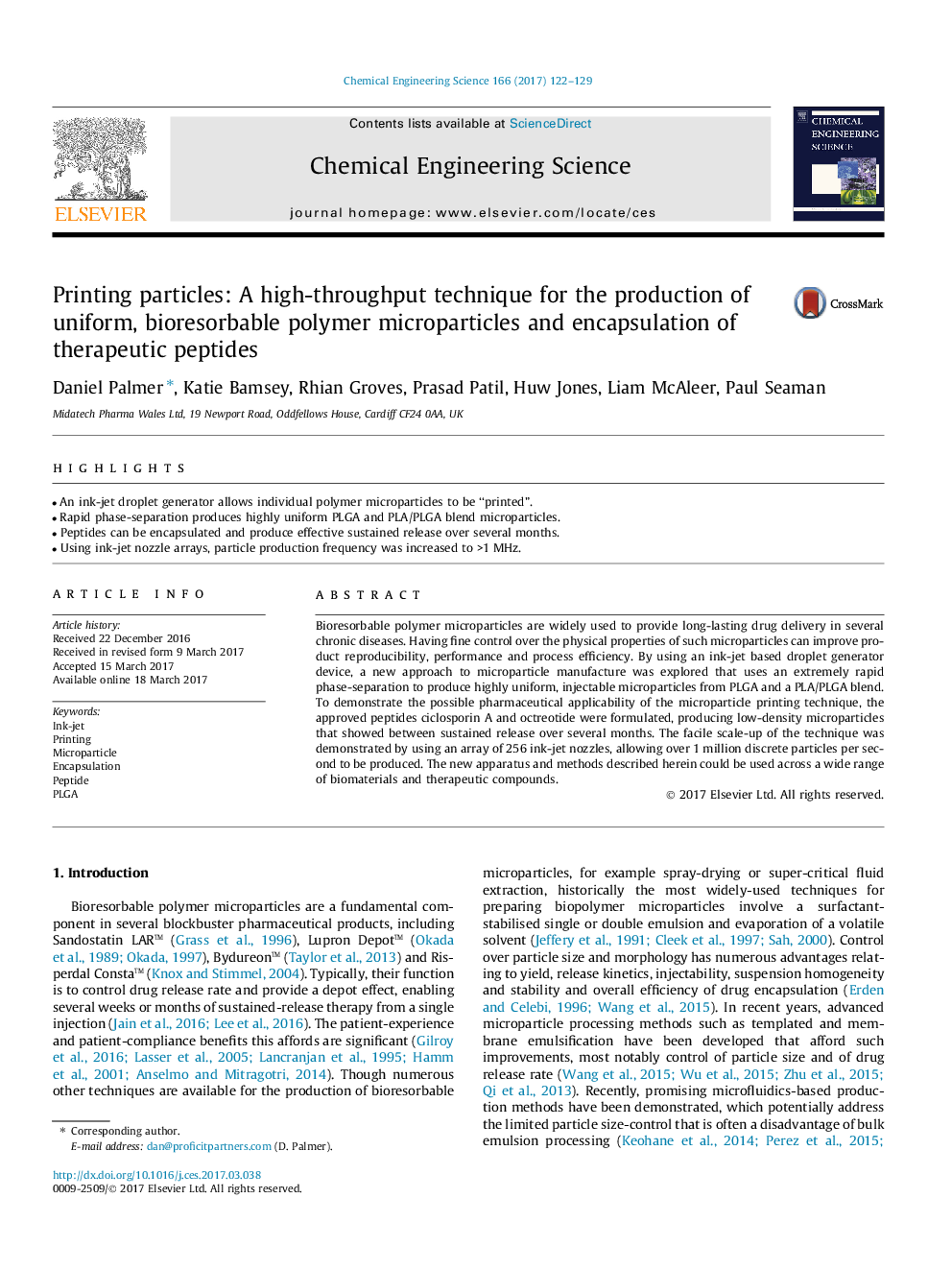| Article ID | Journal | Published Year | Pages | File Type |
|---|---|---|---|---|
| 6467622 | Chemical Engineering Science | 2017 | 8 Pages |
â¢An ink-jet droplet generator allows individual polymer microparticles to be “printed”.â¢Rapid phase-separation produces highly uniform PLGA and PLA/PLGA blend microparticles.â¢Peptides can be encapsulated and produce effective sustained release over several months.â¢Using ink-jet nozzle arrays, particle production frequency was increased to >1 MHz.
Bioresorbable polymer microparticles are widely used to provide long-lasting drug delivery in several chronic diseases. Having fine control over the physical properties of such microparticles can improve product reproducibility, performance and process efficiency. By using an ink-jet based droplet generator device, a new approach to microparticle manufacture was explored that uses an extremely rapid phase-separation to produce highly uniform, injectable microparticles from PLGA and a PLA/PLGA blend. To demonstrate the possible pharmaceutical applicability of the microparticle printing technique, the approved peptides ciclosporin A and octreotide were formulated, producing low-density microparticles that showed between sustained release over several months. The facile scale-up of the technique was demonstrated by using an array of 256 ink-jet nozzles, allowing over 1Â million discrete particles per second to be produced. The new apparatus and methods described herein could be used across a wide range of biomaterials and therapeutic compounds.
